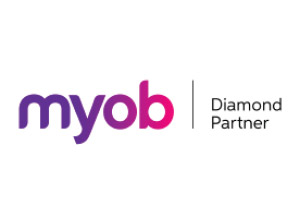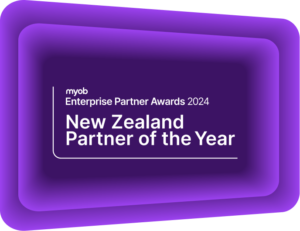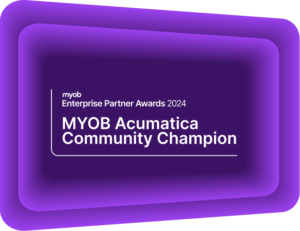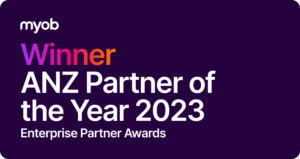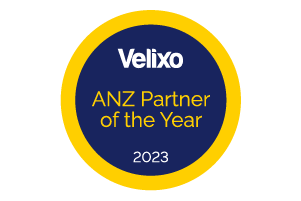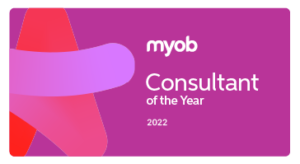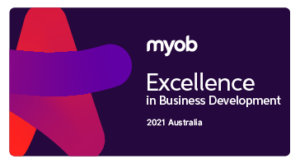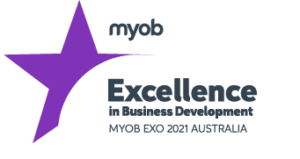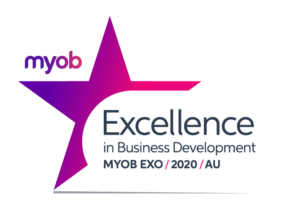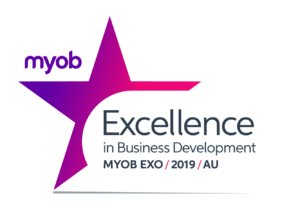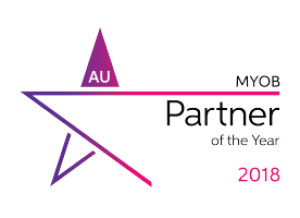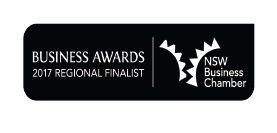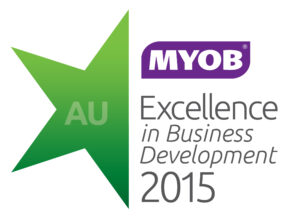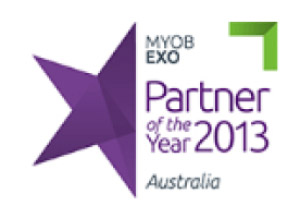Distribution made easy with efficient workflows
Get your orders out the door quickly and efficiently with best-practice distribution strategies.Efficient distribution workflows are essential for maintaining customer satisfaction and ensuring operational success. This involves more than just moving products from the warehouse to the customer; it requires a coordinated, timely effort across the supply chain. By leveraging advanced technologies and best practices, businesses can improve efficiency, reduce costs, and enhance customer service.
Common distribution models
There are three ways that goods can leave your warehouse:
- The goods are sent to the customer using a third-party distribution service or courier,
- The goods are sent to the customer via your own fleet or delivery service,
- The customer collects the goods from your warehouse/location.
For each distribution method you may find that your picking, packing, and distribution workflow is different. There are different ways to optimise your processes for each different method.
Distributing orders with third-party shipping providers
Distributing orders via a third-party provider involves partnering with a specialised shipping company so you can focus on your core operations. The third-party collects orders from your warehouse and distributes them to the customer, based on information you provide. Shipping with third parties such as TOLL and StarTrack is an extremely common method of distribution.
Benefits of shipping with third-party providers
- Outsourcing shipping frees up your team to focus on other areas of the organisation,
- Third-party distributors have established options and infrastructure to ship larger, complex orders,
- Can communicate tracking information directly with the customer,
- They are experts in managing shipping compliance and regulatory requirements,
- Access to global shipping networks – especially useful for organisations looking to expand their reach into new markets,
- Third-party providers can reach more locations faster with expanded distribution networks, often resulting in lower costs.
Challenges of shipping with third-party providers
- Loss of control of customer interaction and customer service – your reputation is all up to the shipping provider,
- Distribution timelines are extended without accurate and timely data exchange with shipping providers,
- Certain shipping providers may have hidden fees or specific contract charges, such as fuel surcharges or carton requirements,
- Over-reliance on a single provider can be risky if they face operational difficulties or financial instability, whereas working with multiple partners compounds the risk of manual work slowing down distribution or the likelihood of getting stung by hidden fees or unfavourable contract terms,
- Resolving delivery issues such as lost or damaged packages is more complicated when working with a third-party.
Preparing the order for third-party distribution
When sending via a courier, it’s common to be charged based on weight and/or dimensions. The supply plan should include a picking, packing, and, optionally, a checking component. For example:
Couriers and third-party distributors commonly charge based on weight or carton dimensions. This information should be collected, checked, and supplied to the courier ahead of pickup. Depending on the size of your warehouse and the complexity of your orders, you may need to manage a range of picking and packing strategies:
- Pick the stock for multiple orders all at once, then separate it into packs by scanning the items into boxes/satchels or scanning them onto pallets or crates.
- Pick and pack individual orders at the same time as you move through the warehouse.
- Pick each item first, then check the items and specify the number of packages.
Consigning the order to a third-party
Once the order is picked, packed, and checked it must be consigned to the courier company. Third-party distributors require labels to be printed and affixed to orders before they leave the warehouse. This can be done in a few ways:
- Print a dispatch document once the order is packed and checked. The document should have all the details required for manual re-entry into the courier’s website/paperwork,
- Integrate the entry of the dispatch document directly with a courier such as TOLL or Australia Post.
- Use a third-party freight management tool such as OpenFreight, which gives access to multiple carriers on a single platform and integrates your dispatch document automatically.
Using a third-party tool to manage shipping consignments provides significant efficiencies for your team:
- Save at least a minute per order by eliminating manual data re-entry to external systems – the value of this saved time adds up extremely quickly,
- Specify the courier on the order, select the cheapest service, or get quotes on your device with cost and estimated delivery dates. Again, this eliminates the need to go to a computer,
- Print labels straight away to a printer close to the packing bench,
- Freight-spend data analysis integrated into your MYOB ERP,
- Automatic anomaly detection and account reconciliations.
eveXso streamlines third-party shipping
eveXso is a warehouse management system (WMS) that integrates directly with your MYOB ERP. eveXso interfaces directly with OpenFreight to select the cheapest third-party provider and automate the consignment process. eveXso also supports third-party shipping by capturing carton weights and dimensions during the picking and packing stage. This information is included in the consignment and integrated back into your MYOB ERP.
Delivering customer orders with your own team
For some organisations, it is more convenient or suitable to use your own team members for product delivery.
Benefits of handling shipping in-house
- You have more control over the process with consistent service standards that meet your company’s expectations,
- Option for higher-level, white glove delivery services that cannot be entrusted to the major third-party distributors,
- Potential cost savings by eliminating costs from third parties,
- Maintain customer satisfaction and relationships,
- Maintain data security by removing the need to communicate with external suppliers.
Challenges of handling shipping in-house
- High initial investment in vehicles, technology, and personnel,
- Ongoing maintenance of vehicles and other equipment,
- Responsibility for handling compliance and regulatory requirements of the shipping process,
- Difficulty scaling your operations or including new markets in your delivery options,
- Additional labour costs or resources allocated to deliver in a timely manner.
Preparing the Order
Picking, packing, and checking processes can likely mirror the steps to prepare an order for third-party distribution. However, weights and dimensions might not be important depending on your product as there is no additional charge for heavier cartons. You may want to capture this information if you have heavy or bulky products or if you need to monitor the vehicle load.
Manifesting and loading orders for your team
Orders can be manifested automatically or manually assigned to vehicles depending on your business needs:
- Automatically manifesting to vehicles is especially efficient when you have a route that is defined. For example, visiting a customer every Tuesday and Thursday.
- Manifesting manually is great when you have one-off deliveries or bulky/heavy items that need to be managed across vehicles.
Once the orders are on the manifest, check the vehicle to ensure all required packages are accounted for and that the vehicle is loaded properly. For example, if your vehicle is rear access only it should be loaded in reverse so that the first orders to be delivered are easily accessible closest to the door. Ideally, the tracking information should be available to the customer automatically, without your team having to manually check in on the driver. Capturing proof of delivery and managing discrepancies are other important steps
eveXso empowers your team with direct shipping management
Transport management is part of eveXso’s core software. Orders prepared using the eveXso pick/pack process will automatically flow through to the manifesting and delivery process, and all information will be integrated into your MYOB ERP. Other features of eveXso that can make your team more efficient distributors are:
- Flexible order workflow processes to prepare the orders for delivery, including pick, pack, and checking.
- Controls to set which days a customer gets a delivery, which service it is allocated to, and the customer’s order in a delivery sequence.
- A vehicle register to store details of your fleet, streamline checks, and record faults and maintenance.
- Truck loading workflows, including reverse delivery order to ensure easy access to the packages or items when the driver arrives onsite.
- Google Maps integration to calculate delivery times and optimise routing.
- Proof of delivery capturing, including text, numbers, lists, signatures, and photos.
Customer collection from your warehouse
Customer collection (including click-and-collect) allows customers to place orders online or via phone and pick them up at a designated location. This is a convenient and flexible alternative to delivery and lowers distribution expenses for your warehouse.
When a customer is coming to collect the goods, the considerations are:
- When can the customer come to collect?
- Should you pick the goods in advance or pick when the customer arrives?
- What information do you need to collect and verify when the customer arrives?
Benefits of customer collection
- No delivery fees for your warehouse or your customer,
- Customers can engage directly with your team, an opportunity to build closer relationships and emphasise customer service,
- Opportunity for same-day collection so your customer gets their order faster,
- Reduced complexity associated with managing third-party providers or delivery routing,
- Reduced risk of theft while the package is in transit/
Challenges of customer collection
- Can become complicated for larger, bulkier orders as it puts the burden on the customer to move the goods,
- Implementing reliable, convenient means of verifying customer identity during pick-up to prevent fraud,
- Limited collection window for customers that need to work around other obligations,
- Designated storage space required for collection orders, limiting overall warehouse storage,
- Complex coordination between picking, packing, and customer collection – goods should be picked, packed and ready for collection before the customer is notified.
Preparing orders for customer collection
A customer onsite should get a good impression from your business and your warehouse. If you are busier during different times in the day, then consider communicating that with the customer and asking them to come at other times. Unless collection is urgent, they will benefit from the increased attention and service they get from your team.
Picking and packing the order ahead of time will streamline the collection process for your customer, as long as the goods are not perishable or you are confident the customer will arrive to collect. Orders should be appropriately labelled and organised to quickly identify and hand over the correct goods. Scanning the order into the collection zone or pigeonhole makes it easier to find when the customer arrives. If you are picking and packing when the customer arrives to collect, you should have a system to flag this with your team so they can prioritise the job and clear it as fast as possible.
Keep in mind that you should verify customer identity and capture proof of collection for your records. If any payment is required, there should be facilities available in your warehouse to collect from the customer.
eveXso boosts customer satisfaction and collection
eveXso has a range of helpful warehouse management features that streamline the customer collection process:
- Prioritisation flagging so that orders can be promptly picked for customer collection,
- Automatic customer notifications to the customer when the order is ready for collection,
- Specific bin location management for easy identification and collection of packaged customer orders,
- Ability to capture proof of collection and collect customer payments with integration to your MYOB ERP.

eveXso Brochure
Download nowTake the next steps
Your organisation can leverage multiple types of distribution workflows. eveXso is a capable solution that is proven to improve warehouse and distribution efficiency. It integrates with both MYOB Acumatica (formerly MYOB Advanced) and MYOB Exo Business for real-time data flow and to maintain your core ERP as a single source of truth for your organisation. Integrations extend the scope of your business management software, letting it achieve more without compromising efficiency or adding in manual data duplication. Talk to our team about how clever integrations can improve your business efficiency.
Build a smarter warehouse for better results
With customers expecting fast and accurate shipping, any bottleneck in your warehouse operations can lead to frustrating delays, disappointed customers, and reduced long-term revenue. Join our free webinar and discover how to build a smarter warehouse and improve customer satisfaction.
Kilimanjaro Consulting is the premier implementing partner of MYOB Acumatica and MYOB Exo across Australia and New Zealand. We are experts at integrating third-party warehouse management solutions like eveXso into your MYOB ERP to improve efficiency. To start a conversation about how to improve your warehouse management process, email samacs@kilimanjaro-consulting.com or call 1300 857 464 (AU) or 0800 436 774 (NZ).

